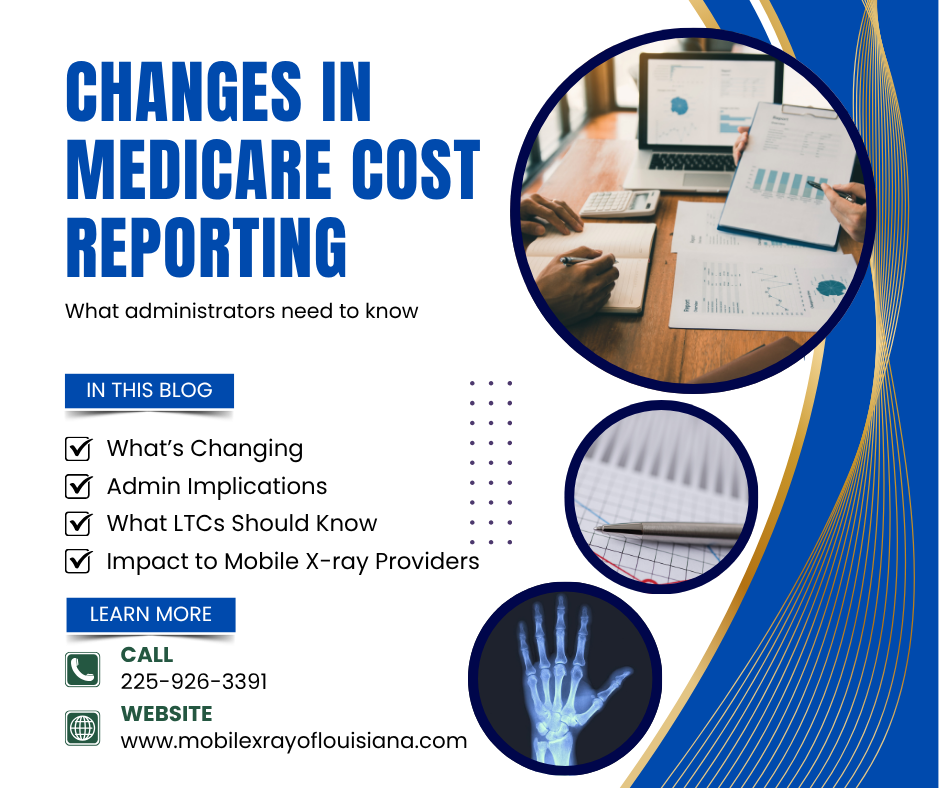Preparing for State and Federal Surveys: What Surveyors Look for in Diagnostic Services
- Michelle Shank

- 2 days ago
- 3 min read

When state or federal surveyors arrive, most long-term care facilities focus their attention on resident care plans, medication administration, and clinical documentation. But one area that often flies under the radar — until it’s too late — is diagnostic services.
Mobile X-ray, EKG, and ultrasound providers are a crucial extension of your care team. Their records, processes, and performance can directly affect your facility’s survey outcomes. Here’s what surveyors typically evaluate and how to make sure you’re prepared.
Why Diagnostic Services Matter During a Survey
Surveyors want to see that your facility maintains oversight of all third-party vendors involved in resident care. That includes ensuring your diagnostic partners meet CMS participation requirements and that their work is properly documented.
When imaging services are overlooked, it can create gaps in compliance — for example, missing physician orders, unverified credentials, or incomplete resident records. These aren’t just technical errors; they can be cited as deficiencies under F-Tags related to quality of care, infection control, or record keeping.
Common Areas Surveyors Flag
Knowing what surveyors look for can help your team prepare and prevent last-minute scrambles. The most frequent issues include:
Missing or incomplete physician orders for diagnostic tests.
Unverified technician credentials — licenses and certifications must be current and available.
Incomplete documentation — results not filed promptly in the resident’s chart.
Delayed report communication to attending physicians.
Infection control lapses during on-site procedures.
Missing vendor agreements or BAAs (Business Associate Agreements) for HIPAA compliance.
Each of these areas demonstrates whether your facility maintains proper oversight and coordination of resident care.
How to Get “Survey-Ready” with Your Mobile Imaging Partner
Preparation doesn’t have to be overwhelming. A few structured steps can help your facility feel confident before, during, and after a survey.
Keep Vendor Information Current
Maintain a binder or digital folder with up-to-date copies of your mobile imaging company’s licenses, technician credentials, and insurance certificates.
Confirm your Business Associate Agreement (BAA) is signed and accessible.
Audit Diagnostic Orders Regularly
Verify that all imaging orders include the date, physician signature, and medical necessity.
Cross-check that results are uploaded to the resident’s EMR within 24 hours.
Review Infection Control Protocols
Ensure your vendor follows your facility’s PPE and sanitation procedures.
Document infection control audits or spot checks for survey readiness.
Strengthen Communication Loops
Assign a point of contact at your facility and within the mobile imaging company.
Have a process for rapid report delivery and physician notification.
Conduct Quarterly Vendor Reviews
Schedule brief meetings or audits to confirm compliance, timeliness, and service quality.
Document these check-ins as part of your QAPI or vendor management program.
What a Strong Vendor Relationship Looks Like
A compliant, reliable imaging partner should feel like an extension of your clinical team — not a vendor that operates in isolation.
Look for a company that offers:
Credential transparency: readily provides technician and licensure documentation.
Secure image sharing: HIPAA-compliant portals or EHR integrations.
Rapid turnaround: same-day or next-day results for most exams.
Clear communication: consistent points of contact for scheduling and reports.
Survey support: quick access to records or documentation when needed.
When your diagnostic partner is proactive and organized, your survey process becomes far less stressful — and your residents benefit from better continuity of care.
Final Thoughts
State and federal surveys don’t have to be intimidating. By reviewing your diagnostic service documentation and maintaining strong vendor relationships, you demonstrate your facility’s commitment to quality, compliance, and resident-centered care.
Mobile imaging plays a key role in that mission — ensuring your residents receive the diagnostics they need, right where they are.
.png)



Comments